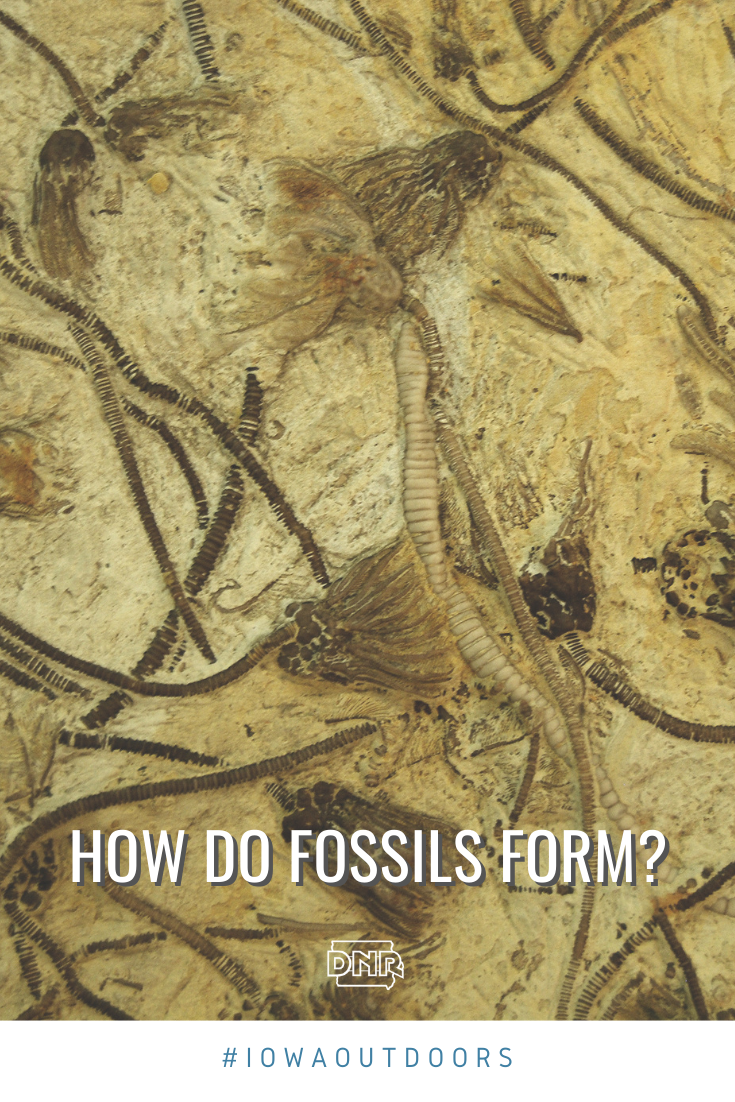 From the Spring 2021 issue of Iowa Outdoors magazine
From the Spring 2021 issue of Iowa Outdoors magazine
Subscribe now
A fossil’s creation can happen in many different ways, but all fossils come from things that lived in a past geological age. They can be as small as a single cell or as giant as a dinosaur skeleton or petrified tree.
It’s rare to become a fossil, since most parts of an animal or plant break down quickly after death. For a fossil to form, sediment must cover the organism quickly. The sediment protects the remains from scavenging animals, erosion and decay. Most often, fossils include hard tissue like bones, teeth, shells and wood, since soft tissue rarely preserves. But footprints and other marks left behind can fossilize, too.
Sometimes, empty spaces in the animal or plant’s body fill with minerals from groundwater. Other times, sediment around the organism turns to stone and the original remains dissolve, leaving a mold. When it fills with sediments, it creates a cast fossil. Amber fossils occur when resin oozing from plants traps insects and hardens.
Fossils lurk below the surface in Iowa—even 100-million-year-old dinosaur bones have been unearthed here. Most Iowa fossils come from aquatic life that lived in tropical seas covering Iowa 500 to 320 million years ago. Scientists have also dug up 15,000-year-old teeth from mastodons and mammoths, as well as 10,000-year-old bones of a ground sloth family that lived in Iowa during the Ice Age.
See Fossils in Iowa:
Devonian Fossil Gorge, Coralville
Floyd County Fossil Prairie Park Preserve